Explore Cairo - Egypt Travel, Africa
Cairo, the capital city of Egypt, is a city where history meets modernity, offering travelers an unforgettable blend of ancient wonders and contemporary life. Known as The City of a Thousand Minarets, Cairo is home to some of the most iconic landmarks in the world. As the gateway to Egypt's rich history, Cairo is the perfect starting point for those looking to immerse themselves in Egyptian culture, both past and present. Whether you’re a history buff, a food enthusiast, or a culture seeker, Cairo’s vibrant energy and warm hospitality will leave you wanting more.
Population: Approximately 10.2 million in 2023.
Economy: Cairo's economy thrives on trade, tourism, and services. As Egypt's capital, it is a hub for commerce, industry, and cultural activities, driving economic growth and offering diverse business opportunities.
Landmarks: Famous for the Pyramids of Giza, Egyptian Museum, and Zamalek.
Egypt
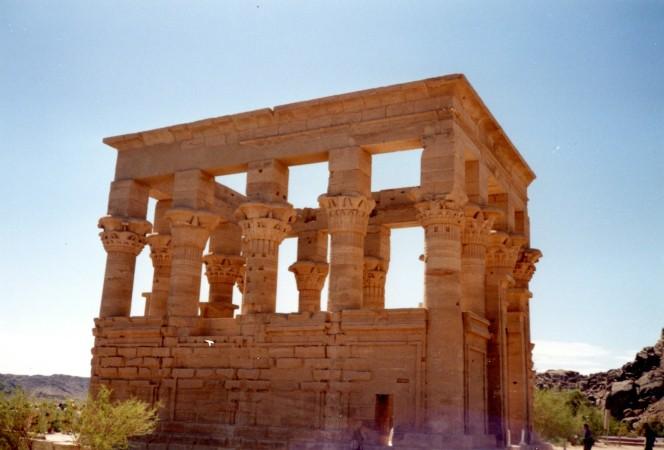
Overview of Cairo
History & Cultural Influence
Cairo’s history stretches back over a thousand years, blending Pharaonic, Roman, Islamic, and Ottoman influences. The city is most famous for its proximity to the Pyramids of Giza, one of the Seven Wonders of the Ancient World, which lies right outside its borders. Cairo itself, however, has its own fascinating history, especially within Islamic Cairo, a UNESCO World Heritage Site filled with mosques, madrasas, and historic buildings that reflect the city’s Islamic heritage. Furthermore, Cairo also reflects its colonial history under the Ottomans and the British, with traces of Western influence seen in architecture, art, and culture.
Interaction with The Locals
Cairo is Egypt's largest metropolis, with a population of about 10.2 million people, ranking among the most populated cities in Africa and the Middle East. The city is a melting pot of cultures and backgrounds, with a diverse population that includes Egyptians from various regions, expatriates, and international students. Cairo’s residents are known for their warmth and hospitality, contributing to the city's vibrant and dynamic atmosphere. The blend of traditional Egyptian customs and modern urban life creates a unique cultural experience for visitors and locals alike.
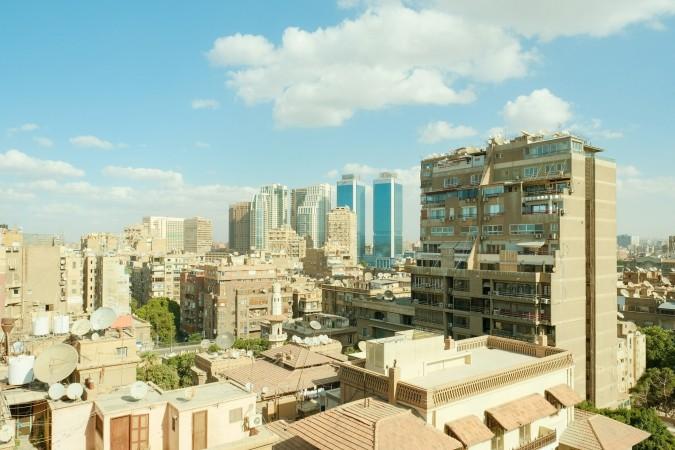
A modern part of Cairo, Egypt - © Nassim Wahba
Top Attractions in Cairo
Cairo’s most iconic sites are a mix of ancient treasures and bustling modern sites, offering a treasure trove of attractions that cater to history enthusiasts, culture seekers, and those looking to experience the vibrancy of this ancient city.
Pyramids of Giza
No trip to Cairo is complete without visiting the Pyramids of Giza, a short drive from the city center. These monumental structures, including the Great Pyramid of Khufu, the Pyramid of Khafre, and the Pyramid of Menkaure, have stood the test of time for over 4,500 years. Alongside the pyramids stands the Sphinx, an enigmatic statue with the body of a lion and the head of a Pharaoh, guarding the ancient tombs. These iconic wonders offer a glimpse into Egypt’s Pharaonic past and remain one of the most awe-inspiring sights in the world.
Egyptian Museum
Located in Tahrir Square, the Egyptian Museum is a must-visit for anyone interested in Egypt’s rich history. The museum houses an extensive collection of artifacts from ancient Egypt, including the magnificent treasures of King Tutankhamun. The museum's exhibits provide invaluable insights into Egyptian civilization, from its earliest dynasties to the Greco-Roman period.
Coptic Cairo
Step back in time with a visit to Coptic Cairo, where you’ll find a wealth of early Christian heritage. Highlights include the Hanging Church, a stunning example of Coptic Christian architecture, and the Coptic Museum, which showcases religious artifacts and artworks from Egypt’s Christian past. This area provides a serene contrast to the lively city streets and a deeper understanding of Cairo’s diverse cultural tapestry.
Zamalek
For a more modern Cairo experience, explore Zamalek, a leafy district known for its art galleries, charming cafes, and the iconic Cairo Opera House. This area is a cultural hub where you can enjoy contemporary art, live performances, and a relaxed atmosphere. Zamalek’s European-style architecture and green spaces offer a pleasant retreat from the city's hustle and bustle.
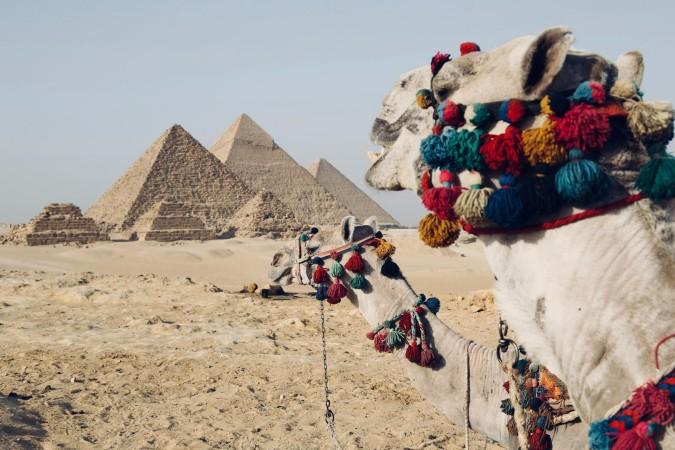
Pyramids of Giza - © Fynn schmidt
Must-Try Dishes in Cairo
Cairo’s culinary tradition is as rich and diverse as its history, offering an array of delectable dishes that reflect Egypt’s vibrant food culture.
- Koshari: A beloved Egyptian street food, Koshari is a hearty mix of rice, lentils, chickpeas, and macaroni, topped with a zesty tomato sauce and crispy fried onions. This dish is a Cairo classic meal and is frequently enjoyed as a filling, inexpensive dinner.
- Ful Medames: Another classic Egyptian dish, Ful Medames is made from slow-cooked fava beans seasoned with olive oil, garlic, and lemon juice. Often eaten for breakfast, it’s a nutritious and flavorful option that reflects traditional Egyptian cuisine. Served with fresh bread and pickled vegetables, Ful Medames offers a taste of local breakfast traditions.
- Molokhia: Molokhia is a distinctive Egyptian dish made from jute leaves simmered into a rich, green stew. Typically served with rice or bread, and often accompanied by chicken or rabbit, this dish has a unique taste and texture. It’s a traditional favorite, particularly during family meals and special occasions.
- Fiteer: Known as Egyptian pizza, Fiteer is a flaky pastry that can be filled with a variety of ingredients, such as cheese, honey, or vegetables. Whether enjoyed sweet or savory, Fiteer is a versatile treat that can be found in many Cairo bakeries and eateries. It’s perfect for a quick snack or a light meal.
- Mahshi: Mahshi refers to vegetables like bell peppers, zucchini, and eggplant stuffed with a savory mixture of rice, herbs, and spices. This dish is a common feature at Egyptian family gatherings and festive occasions. Each bite offers a burst of flavor and a glimpse into traditional Egyptian home cooking.

Koshari - © Arroz Montsià
Festivals & Local Celebrations
Cairo’s calendar is filled with vibrant festivals and local celebrations that showcase Egyptian culture and traditions.
Ramadan
During Ramadan, Cairo transforms into a city of lights and festivities. The holy month is marked by fasting from dawn to dusk, followed by lively Iftar meals where families and friends gather to break their fast. Streets are adorned with colorful lanterns, and special markets pop up selling traditional sweets and delicacies. The atmosphere is festive and communal, offering visitors a unique glimpse into Egyptian religious practices and celebrations.
Eid al-Fitr and Eid al-Adha
Following Ramadan, Eid al-Fitr and Eid al-Adha are significant celebrations in Cairo. Eid al-Fitr marks the end of Ramadan with joyous gatherings, special prayers, and feasts. Eid al-Adha, also known as the Festival of Sacrifice, involves the ritual sacrifice of animals and is celebrated with large family gatherings and community meals. Both festivals are vibrant, with elaborate decorations and a strong sense of community.
Cairo International Film Festival
The Cairo International Film Festival is an annual event that attracts filmmakers and cinema enthusiasts from around the world. Held in November, it showcases a diverse range of films, including international and Egyptian productions. This festival highlights Cairo’s growing cultural scene and provides an opportunity to experience global cinema in a historic setting.

Cairo International Film Festival - © CGTN
What to Do in Cairo
- Camel Rides and Desert Safaris: Experience the thrill of camel rides and desert safaris just outside Cairo. Explore the vast expanses of the Egyptian desert, marvel at the stunning landscapes, and enjoy a traditional Bedouin-style meal under the stars.
- Nile River Cruises: Relax on a traditional felucca or a luxurious boat while cruising along the world’s longest river. These cruises often include dining, entertainment, and stunning views of Cairo’s skyline and historic landmarks, making them a perfect way to experience the city from a different angle.
- Local Music and Dance Shows: Enjoy Cairo’s vibrant local music and dance shows, including traditional belly dancing and folk performances. These shows are a great way to experience Egyptian entertainment and immerse yourself in the city’s lively culture.
- Historic Walking Tours: Explore Cairo on foot with historic walking tours that lead you through the city’s iconic neighborhoods. Discover the Coptic Quarter with its ancient churches and historic buildings, or stroll through Islamic Cairo to admire the architectural marvels of mosques and palaces.
- Visit the Village of Fustat: Explore Fustat, one of Cairo’s oldest districts, to experience Egypt’s rich history. Visit the Ancient Islamic Cairo area, which includes significant historical sites such as the Bab Zuweila gate and the Sultan Hassan Mosque.
Shopping in Cairo
- Khan El Khalili Bazaar: Khan El Khalili Bazaar is Cairo’s most famous market, known for its bustling atmosphere and eclectic mix of goods. From spices and perfumes to handmade crafts and jewelry, this historic bazaar is a treasure trove of unique items. It’s an excellent place to pick up souvenirs and experience the vibrant local culture.
- City Stars Mall: For a more modern shopping experience, visit City Stars Mall, one of Cairo’s largest shopping centers. It features a wide range of international and local brands, along with dining options and entertainment facilities. This mall provides a contemporary shopping experience with a variety of options for all tastes and budgets.
- Ataba Market: Ataba Market is another bustling shopping area where you can find everything from clothing to electronics at competitive prices. It’s a great place to experience local shopping habits and discover a wide range of products.
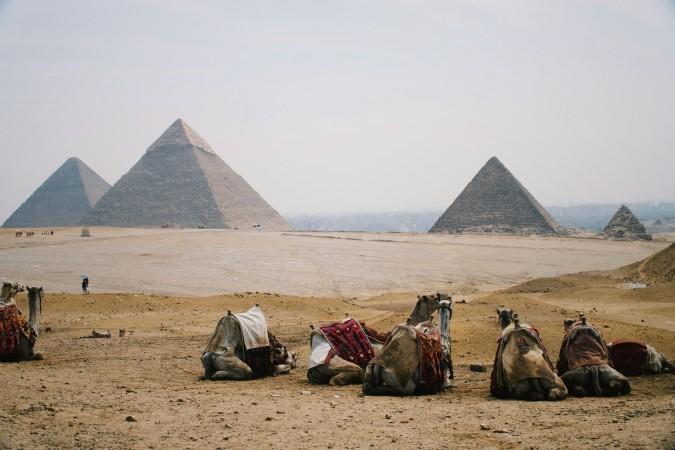
Camel Rides and Desert Safaris right outside Cairo - © Pradeep Gopal
Weather in Cairo: Best Time to Visit
Cairo’s weather conditions influence tourism trends throughout the year. Understanding these trends can help you plan your visit to maximize your experience.
Spring in Cairo
Spring offers warm and pleasant weather, with temperatures between 15°C and 25°C (59°F to 77°F). This season is highly favored by tourists due to the comfortable temperatures and lower humidity, which makes it ideal for exploring Cairo’s outdoor attractions and historic sites. Spring also marks the beginning of several cultural and local festivals, adding to the vibrancy of the city. It’s a popular time for travelers seeking a balanced weather experience and a chance to enjoy Cairo's cultural offerings.
Summer in Cairo
Summer in Cairo is very hot, with temperatures regularly topping 35°C (95°F). During this season, tourist activity can be lower due to the extreme temperatures, making it less crowded at popular attractions. However, evening excursions and indoor attractions such as museums and shopping malls remain popular. If you can handle the heat, you might enjoy quieter sites and lower accommodation rates. Remember to remain hydrated and schedule outside activities at cooler times of the day.
Autumn in Cairo
Autumn is a peak season for tourism in Cairo, as temperatures become more comfortable, ranging from 20°C to 30°C (68°F to 86°F). This is an ideal time for sightseeing and outdoor activities, with pleasant weather making it easier to explore the city’s landmarks. Visitors flock to Cairo during this season to enjoy cultural festivals and events, making it a vibrant time to experience the city's social scene and historical attractions.
Winter in Cairo
Winter in Cairo is mild and comfortable, with temperatures ranging from 10°C to 20°C (50°F to 68°F). This season is particularly popular among tourists looking to escape colder climates elsewhere. The mild weather is perfect for exploring outdoor sites such as the Pyramids of Giza and local markets. Winter also sees an increase in tourism for cultural events and festivals, providing a great opportunity to experience Cairo's festive atmosphere without the intense summer heat.
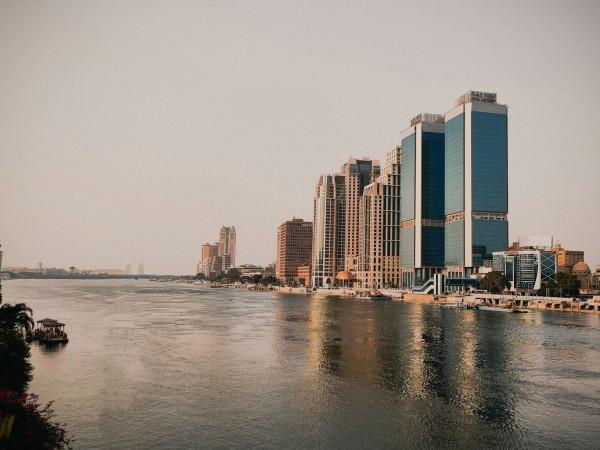
Cruising along Nile River - © Ali Othman
Essential Travel Information
Getting Around Cairo
- Metro: Cairo’s metro system is a convenient and affordable way to travel around the city. The metro network is extensive, covering major areas and attractions. It’s a popular choice for avoiding traffic and getting around quickly.
- Taxis and Ride-Sharing: Taxis are widely available in Cairo and can be hailed on the street or booked in advance. For a more modern alternative, ride-sharing apps like Uber and Careem are popular and often provide a more reliable service with fixed fares.
- Public Buses: Public buses offer a budget-friendly way to travel, though they can be crowded and less predictable. They cover a wide range of routes and are a good option for longer journeys within the city.
- Walking: Cairo’s historic areas and bustling markets are best explored on foot. Walking allows you to fully immerse yourself in the local atmosphere and discover hidden gems that might be missed while using other forms of transportation.
ATM & Banking Services
Cairo offers a variety of ATM and banking services to meet travelers' needs. ATMs are widely available throughout the city, including at major tourist spots, shopping centers, and airports, providing easy access to cash and currency exchange services. Most ATMs accept international cards, but it’s advisable to use those located in secure, well-lit areas. For efficient financial management during your stay, it's helpful to familiarize yourself with the locations and services available.
Where to Stay in Cairo
- Luxury Hotels: For travelers seeking a high-end experience, Cairo’s luxury hotels provide top-notch amenities, stunning views, and exceptional service. These upscale accommodations often feature world-class facilities such as fine dining restaurants, spas, and concierge services, ensuring a comfortable and indulgent stay.
- Mid-Range Hotels: Mid-range hotels create a balance between comfort and price. These hotels provide good value with a range of amenities, including comfortable rooms, on-site dining, and convenient locations near major attractions.
- Budget Lodgings: Budget lodgings in Cairo include hostels, guesthouses, and economy hotels. These options offer basic amenities at more affordable rates, making them suitable for budget-conscious travelers. They often provide a more communal and casual environment, ideal for those looking to save on accommodation costs.
- Homestays: Homestays in Cairo allow you to see daily Egyptian life, local culture, and traditional cuisine. They often feature personalized services and a more authentic atmosphere compared to traditional hotels.
Articles for you

Explore Yala National Park - Sri Lanka Travel, Asia
Tucked away in Sri Lanka’s southeastern corner, Yala National Park is where wild nature meets deep tradition. Known worldwide for its leopard population, the park is also home to elephants, sloth bears, crocodiles, and hundreds of bird species. Beyond wildlife, Yala opens doors to a cultural landscape dotted with ancient temples, Buddhist ruins, and coastal villages. For travelers seeking more than just a safari, Yala offers a chance to explore eco-tourism, local communities, and sacred heritage sites.
Population: The Yala National Park area doesn’t have a human population.
Economy: The economy around Yala National Park thrives on a blend of eco-tourism, agriculture, and local services. Safari tours, eco-lodges, and cultural experiences drive steady income for nearby towns like Tissamaharama and Kataragama, supporting thousands of families.
Landmarks: Famous for Block I of Yala and wildlife encounters, including elephants, sloth bears, crocodiles, and exotic bird species.

Explore Galle - Sri Lanka Travel, Asia
Nestled on Sri Lanka’s southern coastline, Galle is a vibrant city where history meets the sea. Its cobbled streets, colonial architecture, and serene beaches make it a must-visit destination for travelers seeking a blend of culture, adventure, and relaxation. A UNESCO World Heritage site, Galle captivates visitors with its Dutch Fort, bustling markets, and friendly locals. Whether you’re exploring the ramparts at sunset or savoring fresh seafood by the shore, Galle promises an unforgettable journey into Sri Lanka’s heritage.
Population: Approximately 113,000 in 2023.
Economy: Galle’s economy thrives on tourism, trade, and fisheries. The city’s historic fort, colonial architecture, and coastal charm draw thousands of international visitors each year, making tourism its main economic driver. Fishing remains vital for local livelihoods, supplying fresh seafood across the region.
Landmarks: Famous for the Galle Fort, Dutch Reformed Church & Maritime Museum, and Unawatuna Beach.

Explore Bentota - Sri Lanka Travel, Asia
Nestled along Sri Lanka’s southwestern coast, Bentota is a tropical paradise that blends golden beaches, vibrant culture, and thrilling adventures. Famous for its calm waters, luxury resorts, and scenic river estuary, Bentota has become a top destination for travelers seeking both relaxation and authentic experiences. From serene beach walks at sunrise to adrenaline-pumping water sports, this coastal town offers a perfect balance of leisure and exploration. With its proximity to Colombo and Galle, Bentota is easy to reach, making it an ideal stop for both short escapes and extended holidays.
Population: Approximately 37,000 in 2023.
Economy: Bentota’s economy thrives mainly on tourism, which drives local businesses such as hotels, restaurants, and wellness retreats. The town also benefits from fishing, coconut cultivation, and handicrafts like wood carving and batik textiles. Many residents rely on the growing demand for water sports and Ayurvedic treatments, making tourism the backbone of both income and employment in the area.
Landmarks: Famous for Bentota Beach, Bentota River Safari, and Kande Vihara Temple.

Explore Mirissa - Sri Lanka Travel, Asia
Mirissa is a charming coastal town on Sri Lanka’s southern shoreline. Known for its golden beaches, turquoise waters, and vibrant marine life, it has become a must-visit stop for travelers exploring the island. Many come for whale watching, surfing, and sunset views at Coconut Tree Hill, but Mirissa offers much more than postcard beauty. The fishing boats you see anchored by the bay carry generations of stories. Local traditions, delicious cuisine, and a laid-back rhythm of life shape every visitor’s experience.
Population: Approximately 4,700 in 2023.
Economy: Mirissa’s economy is largely shaped by its coastal location. Fishing has long been the backbone of local livelihoods, with generations relying on the Indian Ocean for income. In recent decades, tourism has become the main driver of growth, thanks to whale watching, surfing, and beachside hospitality.
Landmarks: Famous for Mirissa Beach, Coconut Tree Hill, and Parrot Rock Bridge.

Explore Nuwara Eliya - Sri Lanka Travel, Asia
Tucked away in the Central Highlands of Sri Lanka, Nuwara Eliya is often called “Little England”. With its rolling tea plantations, cool misty mornings, and colonial charm, this mountain town feels like a step into another world. Travelers come here to breathe fresh air, walk through flower gardens, sip the finest Ceylon Tea, and enjoy a pace of life far from the island’s busy cities. Whether you’re drawn by scenic landscapes, heritage architecture, or the warmth of its people, Nuwara Eliya is a destination that blends nature, culture, and history in perfect harmony.
Population: Approximately 781,000 in 2023.
Economy: Nuwara Eliya’s economy thrives mainly on tea production, as it sits in the heart of Sri Lanka’s central highlands, famous worldwide for Ceylon Tea. The city also benefits from a growing tourism industry, attracting visitors with its colonial charm, cool climate, and scenic landscapes.
Landmarks: Famous for Gregory Lake, Hakgala Botanical Garden, and Victoria Park.

Explore Sukau - Malaysia Travel, Asia
Nestled on the banks of the Kinabatangan River in Sabah, Malaysian Borneo, Sukau is a destination where wildlife, culture, and conservation come together. Known as one of Asia’s top spots for river safaris and eco-tourism, this quiet village offers a front-row seat to encounters with Bornean orangutans, pygmy elephants, proboscis monkeys, and exotic birdlife.
Population: Approximately 1,400 in 2019.
Economy: Sukau’s economy is shaped by its riverine location and natural resources. Traditionally, the Orang Sungai community relied on fishing, small-scale farming, and forest gathering for their livelihood. Today, the village has shifted toward eco-tourism, with river cruises, jungle trekking, and homestays providing income.
Landmarks: Famous for the Kinabatangan River cruises, Gomantong Caves, and Ox-bow lakes and wetlands.
